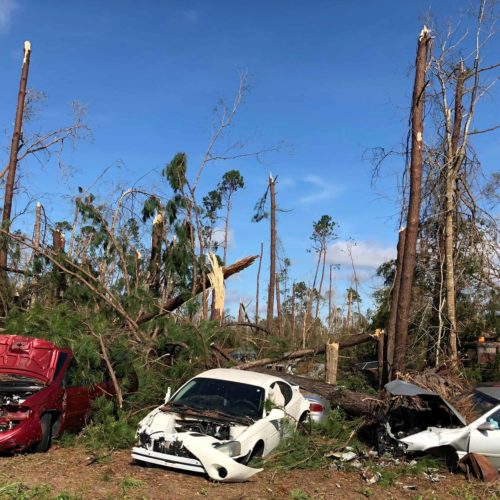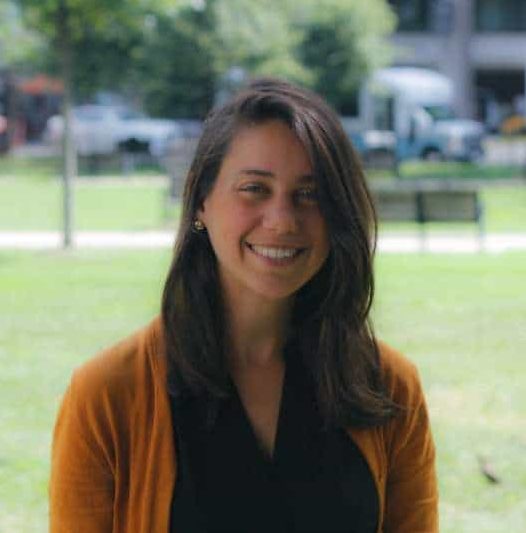This story was published in partnership with The Weather Channel.
Introduction
“Oh my God,” Kristy Terry repeated from the passenger seat of her husband’s white pickup truck as he swerved around Hurricane Michael’s remnants in October. Roofs had crumpled like tissue paper. Insulation from ruined buildings covered the ground like snow. And then there were the trees.
As much as anything, the downed and broken trees signal how long recovery will take for Calhoun County, Florida, a rural area where Terry lives about an hour from the state’s Gulf of Mexico coastline. Before the storm, the timber industry was a top employer. People also planted their own properties with pine trees — which must grow for 20 years or more before they can be sold — to save for retirement or college. In a county where the typical household income is nearly 40 percent below the U.S. median, those losses represent a devastating blow.
“We don’t know what we will be after this,” said Terry, executive director of the Calhoun County Chamber of Commerce. “We do anticipate people will leave. They won’t have a choice.”
Natural disasters are often seen as equal-opportunity events. They strike the rich and poor, black and white, old and young. But people who start out with fewer resources and power, federal researchers say, are less likely to recover financially afterward — and more likely to die. Some people with low incomes live in more hazardous areas, places made affordable by repeated flooding or other weather events, academics from Princeton University and three other institutions studying 90 years of disasters found. And after disasters, a 2018 analysis concluded, federal relief appears to be widening disparities rather than helping communities return to the status quo.
As climate change worsens, it’s fueling more frequent and extreme natural disasters that will only add to the problem. That includes storms like Hurricane Michael, one of the costliest in the world in 2018, which caught places like Calhoun off guard because they rarely have been hit this severely before. Now, academics, advocates and attorneys worry that as the consequences of these disasters grow, vulnerable Americans who are already suffering will get pushed even further behind.
“I don’t really think we’ve learned our lesson,” said Debra Wray Furrh, advocacy director for Lone Star Legal Aid in Texas. “We keep seeing the same results over and over and over.”
Who’s vulnerable?

Natural disasters hit large swaths of America every year. Only four U.S. counties escaped significant damage from these hazards between 1999 and 2013, according to a recent study. In 2017 alone, hurricanes, wildfires and other extreme weather affected nearly 8 percent of the U.S. population — 25 million people. And they don’t all have an equal ability to respond.
People who are poor, racial or ethnic minorities, young or old, or who live in certain types of housing, like mobile homes, are generally less resilient when disasters strike, according to a report by the federal Substance Abuse and Mental Health Services Administration. But that can vary a lot.
“What makes one person vulnerable might not make another person vulnerable,” said Christopher Emrich, an associate professor at the University of Central Florida.
So academics and federal officials, hoping to improve disaster response, have been developing tools known as vulnerability models that use 15 or more factors to get a fuller picture. Take income and housing. People with less money are more likely to live in badly constructed, older or mobile homes, increasing their risk of damage from natural disasters, studies show.
What makes people vulnerable before disasters may also leave them less able to get assistance after. Some don’t know about available support. Others lack the time or ability to navigate the challenging process of seeking aid, experts said.


Join the conversation
Show Comments